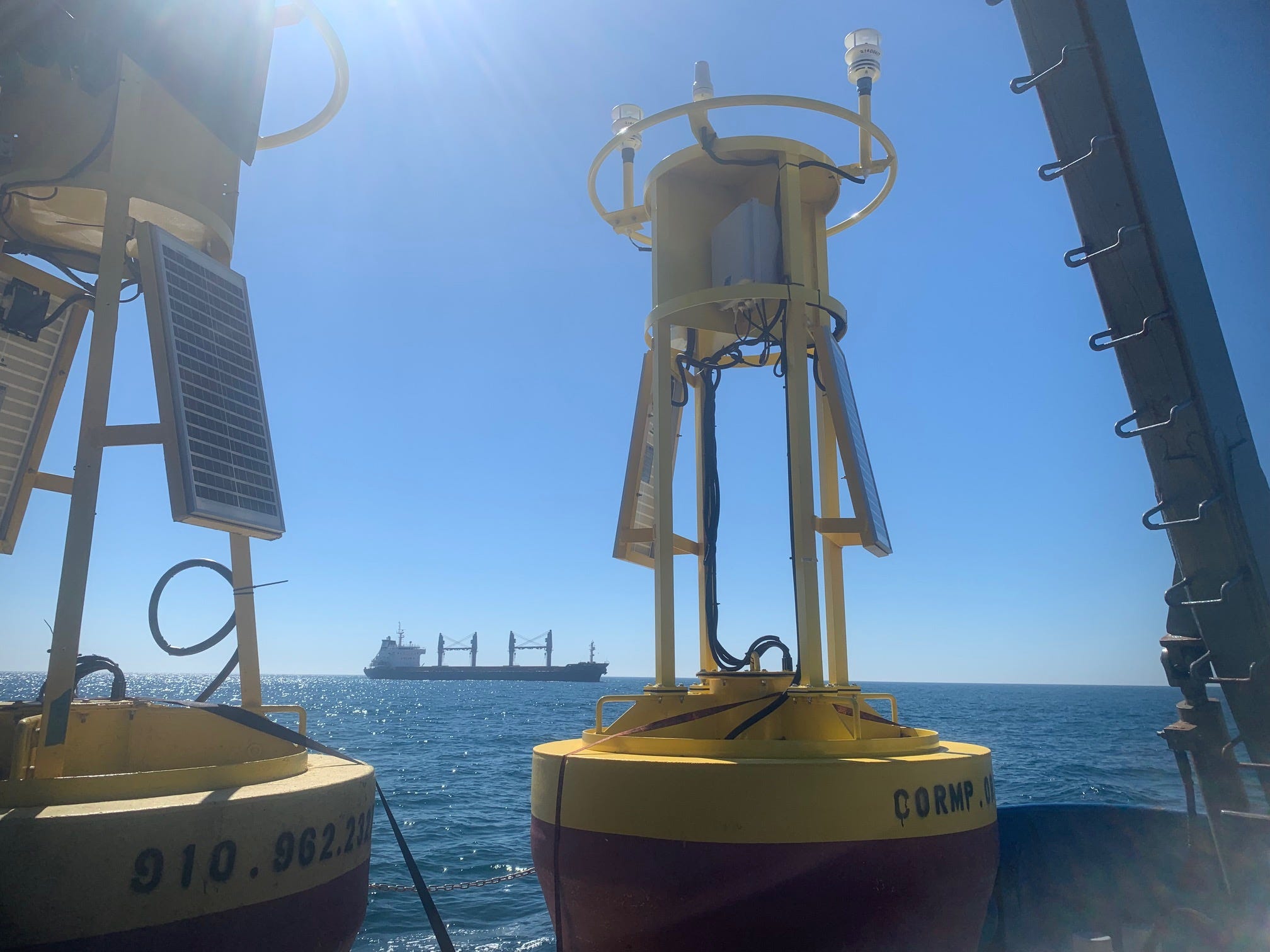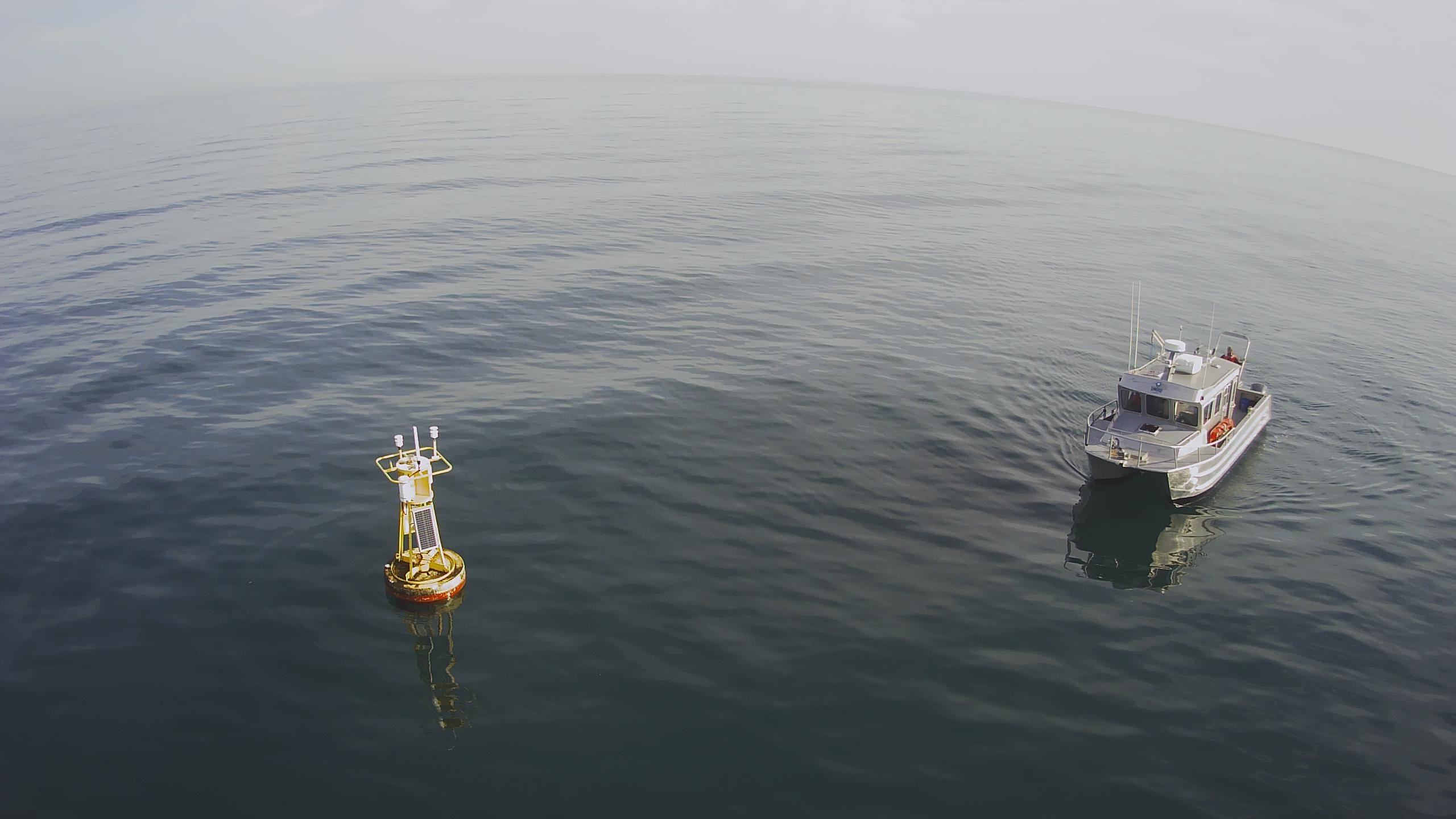People in Harm’s Way: How Proposed DOGE Cuts Could Endanger NOAA Weather Buoys
Captain Dave Tilley was straightforward with his concerns regarding the potential consequences if the buoys near the coast of North Carolina, which supply current weather, sea, and climate information, were shut down because of the suggested budget reductions under President Trump’s proposal.
The captain of the Wild Rover III, based in Carolina Beach and an operator here, stated, 'I can glance at a flag on the shore and determine what’s happening off the coast since I’ve had extensive experience with this.' saltwatercentral.com But allow me to point out those who cannot accomplish this, the casual fishermen from Raleigh and Charlotte.
If those buoys aren’t present, people could get injured, plain and simple, plus there are many more individuals compared to myself.
Significant budget reductions suggested at the National Oceanic and Atmospheric Administration As part of Trump's effort to reduce the size of the federal workforce, led by Elon Musk Department of Government Efficiency , could significantly cut down on much of the nation's weather data network that assists fishermen, supplies information for developing advanced weather models, and supports forecasting threats to beaches and coastal areas.
The Coastal Ocean Observation and Surveillance Initiative run out of the UNCW One of the programs potentially slated for closure could be part of a fiscal 2026 budget proposal by the Trump administration, which aims to cut approximately $1.6 billion from NOAA’s funding. In comparison, the agency's budget for fiscal year 2025 stood at almost $6.1 billion. This particular program, managed by UNCW, manages 18 offshore buoys that deliver up-to-date data about marine weather and oceanic conditions across the coastal areas of North Carolina, South Carolina, and Florida’s eastern coastline.
The passback removes departmental functionalities that do not align with the President's priorities and the desires of the American populace," reads a budget passback memorandum outlining suggested reductions to NOAA’s funding. "This entails abolishing ( U.S. Economic Development Administration ) and (the Minority Business Development Agency) as divisions within the Department with substantial cuts to education, grant funding, research initiatives, and climate-related programs within NOAA."
Project 202 5, a forward-looking policy paper developed by the conservatives Heritage Foundation Many view this document as the model both Trump and Musk are using to redefine and reduce the size of the federal government. It suggests significant budget reductions for NOAA, accusing the agency of propagating “climate alarmism” and proposes transferring most of its operations either into private hands or eliminating them—particularly those tasks related to climate change.

Creating a 'blind spot'
Dr. Lynn Leonard manages the UNCW buoy initiative, receiving approximately $420,000 in funding from NOAA.
She mentioned that the program manages nine buoys along Southeastern North Carolina, stretching approximately from Camp Lejeune down to the border with another state, as well as two shoreline installations located at Masonboro Island.
The program's website receives around 5,000 visits each month. However, according to Leonard, the data produced by the system—which includes certain buoys equipped with as many as 10 distinct sensors—is downloaded almost 100,000 times monthly by various public and private entities. The user base spans across companies such as Tilley’s. fishing site To the National Weather Service for its wave and riptide forecast updates, the National Hurricane Center for monitoring tropical storm systems, and the Coast Guard during search-and-rescue missions.
Leonard believes the program has sufficient funds to remain functional until around May 2026. However, shutting down operations beginning with the buoys located north and south of Cape Canaveral in Florida might commence by the end of this year.
Leonard stated that if the buoys turn dark, much of that real-time data would be difficult, perhaps even impossible, to substitute.
“The conditions in the near-shore will be lost, and we really don’t want to have that blind spot near the coast,” she said.
Officials from the National Weather Service's Wilmington branch chose not to comment on how the loss of the buoys and other equipment managed by the UNCW program might affect their forecasting capabilities, directing all questions instead to NOAA public relations in Washington.
"As per longstanding tradition, we refrain from commenting on internal staffing and administrative issues, as well as hypothetical discussions,” stated NOAA spokesperson Alison Gillespie. “The agency stays committed to its purpose of offering current data, studies, and assistance aimed at serving the American populace and securing our country’s environmental and economic stability. Consistent with our duty to safeguard public welfare, we keep delivering weather updates, projections, and alerts.”

We require those buoys; it’s as straightforward as that.
The American Meteorological Society issued a warning in a statement Moving ahead with significant reductions to NOAA’s funding could lead to "unpredictable – but most likely catastrophic – effects on public safety and economic stability."
If Wilmington’s coastal buoys need to be removed from the water, Tilley mentioned that fishermen and others would have to depend on a buoy located 40 miles offshore managed by the National Data Buoy Center close to Frying Pan Shoals for the most recent real-time maritime weather updates.
"Have you ever considered how drastically the ocean varies across 40 miles? It’s significant," he remarked with a sardonic chuckle.
Tilley mentioned that along with other interested groups, they have contacted local politicians to voice their worries regarding the suggested reduction in NOAA financing.
“Precise and up-to-date information from NOAA’s IOOS is essential for North Carolina to enhance its forecasting and readiness for hurricanes,” stated Daniel Keylin, a senior advisor. U.S. Sen. Thom Tillis R-NC stated, “Senator Tillis was pleased to endorse over $3 billion allocated to NOAA via the Bipartisan Infrastructure Law. Should there be any modifications to this funding, they must primarily guarantee no adverse effects on our readiness for storms."
Tilley mentioned that although there are undoubtedly commercial stakeholders, such as himself, who depend on the information provided by the buoys, the more significant concern lies in their critical role for ensuring public safety.
Consider an impending hurricane or tropical storm as an instance.
A twenty-mile journey in one direction or another could significantly change everything, as we’ve painfully discovered in Wilmington," Tilley stated. "We require those markers. That much is clear. Allowing them to be removed would be unwise.
Reporter Gareth McGrath can be contacted via email at GMcgrath@Gannett.com or through Twitter using the handle @GarethMcGrathSN. This article has been developed with financial backing from the Green South Foundation and the Prentice Foundation. However, the USA TODAY Network retains complete authority over all content production.
The article initially appeared in the Wilmington StarNews. People may suffer injuries": The implications of suggested DOGE cuts for NOAA's weather buoys
0 Response to "People in Harm’s Way: How Proposed DOGE Cuts Could Endanger NOAA Weather Buoys"
Post a Comment